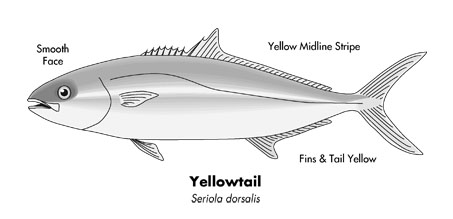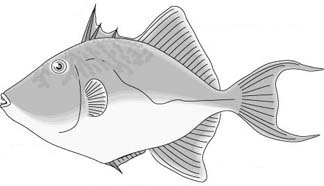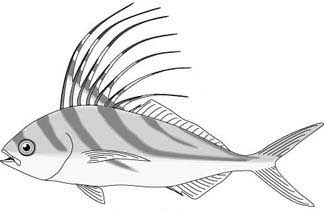
YELLOWTAIL: In the days before the seiners wreaked their havoc, vast schools of yellowtail moved up from their home waters in Baja to feed for the summer in Southern California waters, and anglers caught them by the thousands along the kelp beds, and around the nearby islands.
During the winter months, most of the fish retreated back to the warmer waters off southern Baja, leaving -behind a few “mossbacks” in the local kelp beds to provide some good winter fishing stories.
Today these Pacific schools still migrate up and down the Baja coast, but they are greatly reduced in number and in fish size. Since they grow about three pounds a year, -today a three-and-a-half-foot, 20-pounder is a good one, and a 30-pounder is rare. Unmolested, yellowtail can reach five feet and 50 pounds or more.
Other schools of yellowtail make their home exclusively in the Sea of Cortez. In winter, these fish are found in the southern areas from Mulege to La Paz. During summer, they move up to the cool waters of the Midriff Area.
In the spring and fall, yellowtail school up for migration, and it is then that the best catches are made. Given their preference, yellowtail swim in water between 67° and 77°, but if bait fish are plentiful they will tolerate waters slightly higher or lower than this ideal range.
Although yellowtail are now scarce in California -waters, there are still lots of them in Baja.
Most big yellowtail caught in the Cortez are found down in the reefs 100 to 250 feet deep. They are hooked either on live bait or on iron jigs yo-yoed near the bottom. Heavy tackle, in the 40-pound range, is used to avoid getting cut off on the rocks, and this doesn’t allow the fish to give you its best fight. You will also catch a few large yellowtail near the surface by trolling large, deep running plugs over these same areas, but for large fish in the Cortez you usually have to go down near the bottom.
Most of the surface action in the Sea of Cortez is on schools of five- to ten-pounders, which regularly feed near the surface at the north or south ends of islands and off those deep water points of cliffs where current slicks can be seen flowing.
By trolling small, minnow-shaped lures, you will catch plenty of these fish. For us, blue-and-silver or green mackerel five-inch Rebel Fastracs or 11-cm Rapala Magnums are the lures that they seem to favor.
Troll the lures in a straight line over their feeding areas at a good speed, maybe six m.p.h..
Along Baja’s Pacific coast, all sizes of yellowtail stay close to the surface in open water while feeding over -shallow reefs, around islands, and along the kelp beds. The center of their Pacific home grounds seems to be the 200-mile stretch of water from Bahia Asunción south to Magdalena Bay. Some of these fish are always present here.
However, prevailing sea conditions on the Pacific side are often hazardous for the small boater. “Getting out” to the fishing grounds can only be done when the waves are small and the winds calm.
Yellowtail are a nice looking fish. They have a blue or olive back, a broad yellow stripe along the side, a white belly, and a forked yellow tail. Surprise, this great game fish has no teeth! What? No, but their gums are rough.
Regardless of whether you are fishing in the Cortez or the Pacific, yellowtail hooked near the surface put up the stubborn fight for which they’re famous.
They strike the lure solidly. On light tackle, they will make a long surface run of 50 to 100 yards. Then they will stay near the surface, and slowly circle your boat. If you let a yellowtail circle in this manner, it will wear itself out fighting line drag and all you have to do is hold on and wait.
However, if you try to muscle a green yellowtail toward the boat, it will usually “sound” straight down, and the -situation is reversed. Now the fish takes it easy and you have the hard job of pulling him up from the depths before he cuts you off on the rocks.
Slabs of yellowtail smoked with the skin on are -excellent. Barbecued with the skin on they are very good, but they are best filleted with all of the pink flesh removed, leaving firm off-white hand-sized pieces.
|




